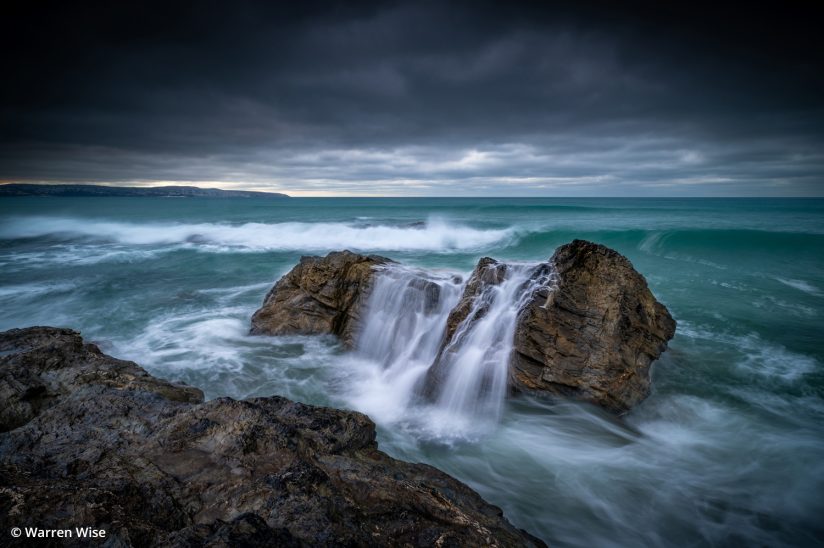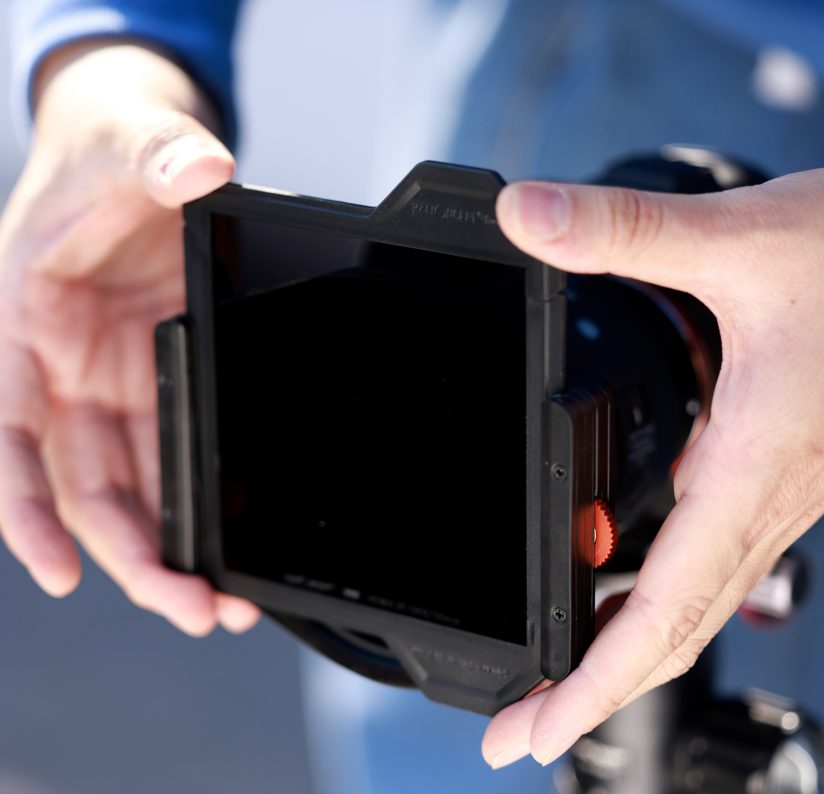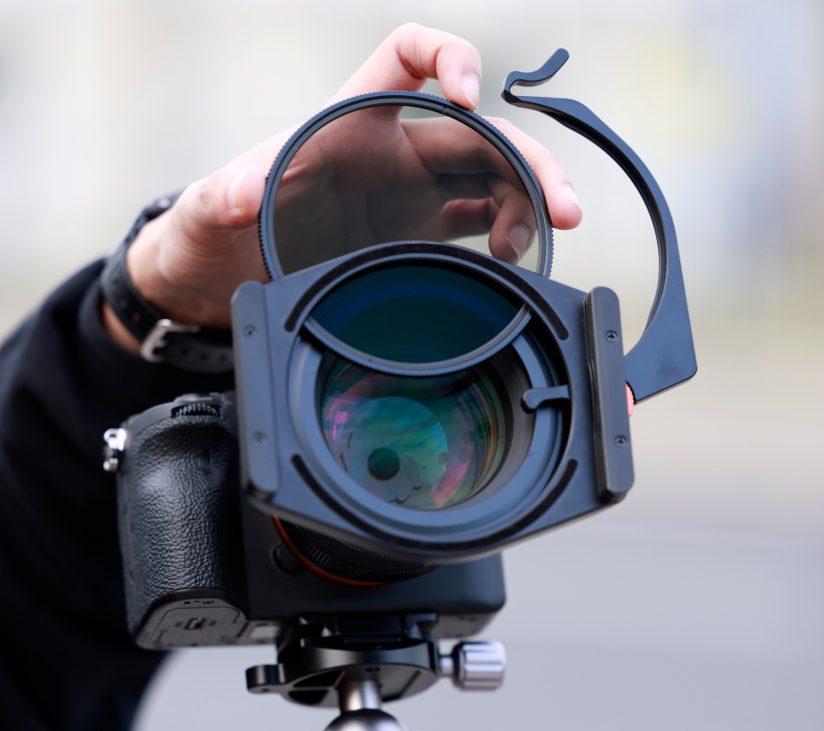What makes a great landscape photograph? An interesting subject and artful framing are important, but even more important is the quality of light. If the exposure is poor, photographs of the most beautiful scenes, thoughtfully composed, will still be unusable.

Long exposure of ocean waves made possible by using a neutral density filter to reduce the light for a slower shutter speed. Photo by Warren Wise Landscape Photography.
Optical filters are the key to controlling the light that your camera records. Though today’s image processing software is incredibly powerful, there’s no digital substitute for the control that optical filters provide when making your exposures. For example, optical filters can enable you to use much slower shutter speeds than you otherwise could for effects like soft, flowing water. They can help you balance extreme contrast in a scene that’s beyond your sensor’s dynamic range and eliminate reflections on the surface of subjects. Optical filters should be part of every landscape photographer’s kit.
Circular Versus Square Filters
There are two options available when choosing filters: circular and square. Circular filters are more common. They attach directly to the threaded screw mount at the front of most lenses. Square filter systems have a filter holder that attaches to the lens with slots into which you slide the filter element.
What Are The Advantages Of Square Filters?
While circular filters are what most beginning photographers choose, square filters offer some important advantages, especially for landscape photographers with multiple lenses.
Square Filters Are A Smarter Investment
One advantage of square filters is value. With circular filters, which are designed for specific lens diameters, you might need to buy multiple filters of the same type in different sizes to match each of your lenses. Square filter systems like K&F CONCEPT’s X PRO Square Filter System allow you to use the same filters with multiple lenses of varying diameters via adapters. That not only saves money in the long run, but it can also help reduce the amount of gear you need to carry in the field.
Filter Stacking Is Better With Square Filters
Square filters are also the better choice when you want to stack multiple filters. Imagine a scene with a very bright sky, a very dark foreground and a river running through the frame that you want to blur. To achieve the best exposure, you might need to use a graduated neutral density filter to balance the foreground and sky illumination, a standard neutral density filter to further reduce the light for a longer exposure time and a polarizer to control reflections, all at the same time.

Filter stacking is faster and easier K&F CONCEPT’s X PRO Square Filter System compared to screw-mount circular filters, and there’s no risk of vignetting.
Although it is possible to stack some circular filters, the problem with this approach is vignetting. As you stack them, because they are the same diameter as your lens, the frames of the filters begin to create dark areas around the edge of the frame. This is especially noticeable when using wide-angle lenses. With square filter systems, which are larger than the diameter of your lens, this problem is avoided. There’s nothing blocking the light, so you get edge-to-edge filter coverage without obstruction.
Square Filters Are Easy To Swap
Another advantage of square filter systems like those offered by K&F CONCEPT is how easy and fast it is to change filters. With circular filters, you need to unscrew the one you’re using and then screw on the one you want. This process might take valuable time when the light is changing quickly. With square filter systems, you simply slide filters in and out of the square filter holder, so you can change filters in just a few seconds and get back to photographing.

Unlike screw-mount circular filters which can be tedious and time-consuming to attach and remove, square filters can be quickly swapped.
Precise Alignment Of Graduated ND Filters
With circular ND filters, you are able to adjust the rotation of the horizon line, but not its vertical position within the frame. This is another advantage of square filters, as you can position the gradient of the filter precisely without affecting your composition.

You can precisely align square graduated neutral density filters by simply sliding their position up or down in the holder.
How To Choose Square Filters
When comparing square filters, start by focusing only on high-quality systems. This doesn’t necessarily mean the most expensive systems are the best value, though. To make a smart choice, you need to compare features and price.
Optical Glass
Remember that any filter you place in front of your lens essentially becomes part of your lens. All the light that enters your lens will pass through your filters first. If the filters aren’t high-quality optical glass with coatings to protect the filter and reduce reflections, you are ultimately compromising your lens investment.
K&F CONCEPT’s square filters feature optical glass with 28-layer nanocoating. These filters are waterproof, protected from scratches, dust and fingerprints, and optically corrected for no color cast.

While we don’t recommend trying to scratch your filters, K&F CONCEPT’s 28-layer nanocoating provides durable scratch resistance.
Filter Frames
Another important feature to consider is the construction of the filters, and how that can affect their durability and ease of use. Some square filters have no frame, which reduces cost but leaves the edges exposed to the possibility of chipping or cracking. It also means that when inserting or removing the filters, there’s no way to handle them without touching the filter’s glass. Other square filters have a frame but aren’t designed with a way to easily grip them when swapping filters.
K&F CONCEPT’s X PRO Square Filter System filters have sturdy polycarbonate frames with generously sized tabs at the top and bottom which provide a convenient way to grip the filters without touching the optical glass. This not only helps prevent fingerprints, but also makes it much easier to swap filters quickly. The frame also adds protection for the optical glass if the filter is accidentally dropped.
Square Filter Holder Design
In addition to the construction of the square filters themselves, also consider the design of the system’s holder. Ideally, it will also be made with high quality materials, allow you to stack square filters and use a circular polarizer simultaneously.

The X PRO Square Filter Holder has an integrated bin to insert a circular polarizer in addition to two square filters.
The X PRO Square Filter Holder from K&F CONCEPT has two slots for square filters, plus an integrated bin for a circular polarizer. An adjustment wheel on the side of the holder allows you to adjust the rotation of the circular polarizer without touching the filter itself. There’s also a clever safety mechanism to ensure that the polarizer is correctly and securely inserted. The holder is made of aluminum alloy to be lightweight and very durable.
The X PRO Square Filter System kit includes 3-stop ND, 6-stop ND and 10-stop ND square filters and a 95mm circular polarizer. You can expand the system with additional filters such as graduated ND, night light pollution and diffusion filters. The kit also includes adapters to attach the holder to four common lens sizes—67mm, 72mm, 77mm and 82mm—and additional sizes are optionally available. Once mounted to your lens, the adapters easily snap into place on the holder and are secured with a twist-lock control knob to prevent accidental disconnection.
The award-winning design of this system eliminates light leaks and provides 91mm coverage for no vignetting, even when using a wide-angle lens with 3 filters installed.
In the video below, Dave McKeegan provides a hands-on review of the K&F CONCEPT X PRO Square Filter System.
Learn More About K&F CONCEPT’s Innovations
With over 150 patents, K&F CONCEPT creates a range of innovative photographic accessories, including filters, tripods, backpacks and lens adapters—with more to come—and has been recognized with international design awards including iF Design Award 2021 and RedDot Product Design 2021.
With K&F CONCEPT, See the Unseen. For more information on K&F CONCEPT products and the X PRO Square Filter System, visit kfconcept.com.
The post The Advantages Of Square Filters appeared first on Outdoor Photographer.















